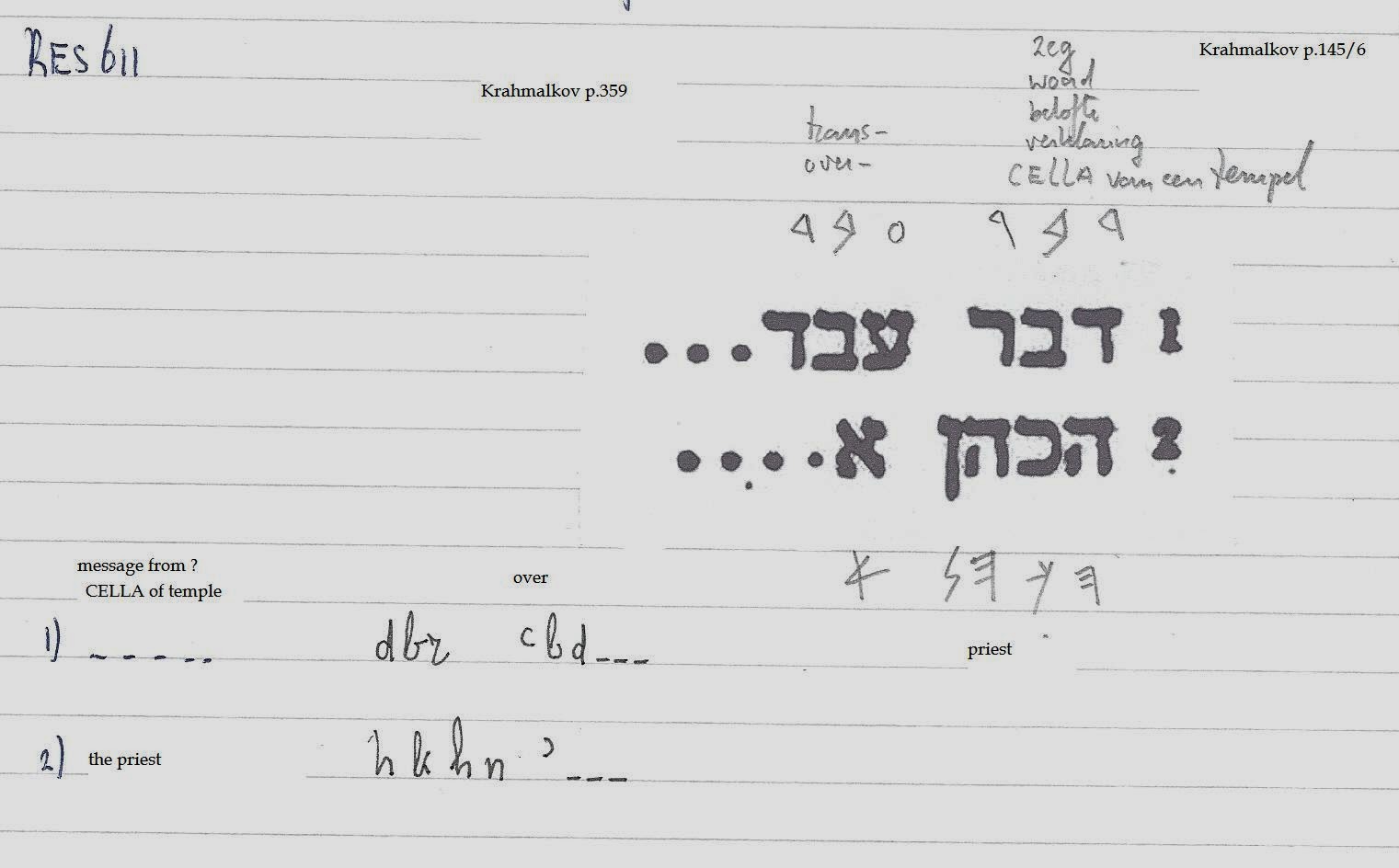HILDUA + QARTIMME
We arrive
at the fifth name in the list of the Assyrian king Esarhaddon (676 BC) of the
towns of the kingdom
of Sidon MISSION
Han
al-Hulde.
Lipinski
states in his book Itineraria : “Here is
a general agreement in identifying Hi-il-du-u-a with the mutation Heldua of the
Bordeaux Itinerary and with present-day Halde,
known in earlier literature as Han al-Hulde, 12 km south of Beirut Beirut to Sidon
Lipinski is
right, that Han al-Hulde (south of Halde or Khaldé) is the Roman-Byzantine
town, but what is lying underneath it? Was that Hildua from the 7th
century BC, or just bare grounds? In any case, it is only sure, that Han
al-Hulde is at the first place a Roman-Byzantine town out of the late Roman
period, although there are some objects found out of the Persian and
Hellenistic period.
Because in
Han al-Hulde or in the vicinity are found graves and inscriptions:
RES 1916:
inscription with ink on an amphora founded in 1897. Text: ‘d’g‘lt. Meaning:?
RES 611:
inscription on a block of sandstone in the necropolis along the road from Beirut to Sidon
There is
still no proof, that Han al-Hulde is also Hildua, because nothing out of the 7th
century has been found. Only the name of (k)Halde shows a great similarity to
the ancient name, which Esarhaddon in 676 BC used: hi-ul-du-u-a!
Kobbet
Choueifat.
Lipinski
continues: “More to the north, on the
slopes of the hill of Qabbat aš-šwayfet, a large Phoenician cemetery was
discovered in 1961-1962 with 422 registered tombs. The 178 tombs excavated then
by R.Saidah can be dated from the 10th through the end of the 8th
century BC. They certainly confirm the existence of an important Phoenician
town, which must be the Hildua of Esarhaddon’s inscriptions.”
There can
be no doubt that this was a Phoenician necropolis, but was it accompanied at
that spot by the town of Hildua
In this very
old cemetery the buried objects were urns for the cremation with a bichrome
painting and so-called Red Slip jars with a round mouth or a threefold mouth
and also Egyptian scarabs. Pilgrim-bottles and beer-bottles are found
especially in the oldest graves.
There is
even found a small Phoenician inscription= gtty. We don’t know what that word stands for. We
only know gṭy as a personal name.
Maybe the
name Hildua was used for both places:
Hildua-the-town
= Khaldé / Han al Hulde (no great
cemetery found yet)(only from 5th century BC)
Hildua-the-necropolis
= Aš-šwayfet (no town found yet)(from
the 7th century BC)
To make
things much more complicated: E.Forrer proposed Bet-Supuri at ‘Ayin Sawfar in:
“Die Provinzeinteilung des Assyrischen Reiches, Leipzig
Qartimme.
Somewhere
close to Beirut
Lipinski in
Itineraria Phoenicia Antioch ,
mentions a small town Khartima, which he locates in Maritime Phoenicia , at the border of Tyrian and Sidonian
territories, and considers as the birthplace of Elissa-Dido, the reputed
founder of Carthage Ch. Clermont-Ganneau identifying this with the
village of Hartum, near the source of the Nahr Abu al-Aswad (in the vicinity of
Tyrus). The place name is the same as Esarhaddon’s Qartimme, but its location
does not favour the identification of the two towns. At any rate, the name
suggests a location at the sea, possible as a marina deserving an inland city. One
may refer to the Elkardie of the crusaders, which seems to contain the element
el-Qart-, and the present-day hamlet of al-Qarteḥ, near aš-šwayfet, between
Halde and Beirut
Conclusion:
We have two towns at the coast, which use a large cemetery in the interior. Those towns are probable named hi-il-du-u-a
and qar-ti-im-me in the 7th century BC, although there are some
doubts, especially on the exact locations. The name of the cemetery also out of
the 7th century BC is not known for sure, but the location is
certain.
Literature:
ITINERARIA PHOENICIA
- Edward
Lipinski. Orientalia Lovaniensia Analecta nr 127. Studia Phoenicia
XVIII. Uitgeverij Peeters en Departement Oosterse Studies. Leuven – Paris –
Dudley, MA 2004.
- R.Saidah. Khan Khaldé. Dossiers de l’Archéologie 12 (1974)
p.50-59.
- M.Chébab.
Mosaïques du Liban (BMB 14-15, 1958-59.
- Nicolas
Carayon. Les ports Phéniciens et Puniques. Strassbourg 2008.







Geen opmerkingen:
Een reactie posten